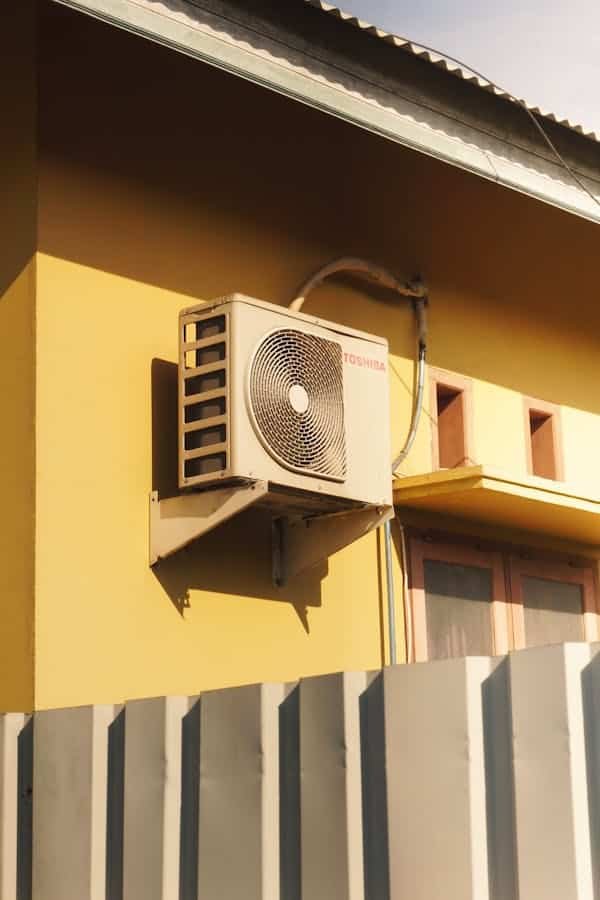Ventilation How to Create a Healthy and Sustainable Indoor Environment
To create a healthy and sustainable indoor environment through ventilation, focus on both natural and mechanical options. Natural ventilation involves opening windows and doors to allow fresh air in, while mechanical systems, such as exhaust fans and air to air heat exchangers, provide consistent and controlled ventilation, according to the U.S. Environmental Protection Agency. When implementing ventilation strategies, factors such as the type of activity, air quality, and building design should be considered.
Have you ever noticed how fresh the air feels the moment you open a window after spending hours in a closed room? That’s ventilation at work and it’s more important than it might seem.

What Is Ventilation, and Why Does It Matter?
At its core, ventilation is simply the process of replacing stale indoor air with fresh outdoor air . But this simple act has powerful benefits:
- Provides enough oxygen for healthy breathing.
- Removes carbon dioxide and other pollutants.
- Controls humidity and prevents mold growth.
- Reduces excess heat from lights, appliances, and people.
- Eliminates unpleasant odors like those from cooking or bathrooms.
- Enhances comfort through gentle air movement.
These benefits make one thing clear: ventilation isn’t a luxury it’s a necessity .
Types of Ventilation Systems: Natural vs. Mechanical

1. Natural Ventilation
Natural ventilation uses forces like wind and temperature differences (stack effect) to move air through a building. It doesn’t require electrical equipment just smart design that allows air to enter from one side and exit from another.
How It Works:
- Wind effect : Air flows into the building through windows or vents and exits from the opposite side.
- Stack effect : Warm air rises and escapes through high openings, drawing cooler air in from below.

Best For:
- Traditional homes
- Low-rise buildings
- Areas with consistent, mild winds
Pros:
- Very cost-effective
- No energy consumption
- Minimal maintenance
Cons:
- May not be sufficient on hot days
- Hard to control precisely

2. Mechanical Ventilation
When natural ventilation isn’t enough, mechanical systems step in using fans and ducts to ensure continuous, reliable airflow.
A. Mechanically Assisted Ventilation (MAVS)
Uses small fans to extract stale air or supply fresh air. Can be controlled manually or automatically using sensors for humidity or occupancy.
B. Mechanical Ventilation with Heat Recovery (MVHR)
A smarter system that includes a heat exchanger. As warm indoor air leaves, it heats up the incoming fresh air saving energy without sacrificing comfort .
Pros:
- Precise and adjustable airflow
- Works regardless of weather conditions
- Ideal for extreme climates
Cons:
- Higher installation costs
- Uses electricity
- Can create noise if not installed carefully

Comparing Natural and Mechanical Ventilation
| Feature | Natural Ventilation | Mechanical Ventilation |
|---|---|---|
| Cost | Very low | Moderate to high |
| Efficiency | Depends on environment | Steady and adjustable |
| Maintenance | Minimal | Requires regular checks |
| Control | Limited | Highly controllable |
| Noise | Silent | Some noise possible |
| Energy Use | None | Moderate to high |
Ducts: The Pathways of Airflow
In mechanical systems, ducts carry air throughout the building , and their shape and size matter a lot.
They can come in different forms:
- Round ducts : Most efficient with minimal resistance.
- Rectangular or square ducts : Used when space is tight.
- Oval ducts : A middle ground between efficiency and space-saving.
Design considerations include:
- Appropriate air speed
- Friction losses
- Leak prevention
- Easy cleaning and maintenance

How to Calculate Ventilation Needs
To size your ventilation system correctly, use this simple formula:Q=3600Room Volume×Air Changes per Hour
Example:
A room measuring 1800 m³ with a recommended 6 air changes per hour:Q=36001800×6=3m³/s
Once you know the required airflow, you can select the right duct sizes using charts or specialized software, factoring in air speed and friction.

The Future of Ventilation: Smarter, Greener Buildings
With climate change and the global push for sustainability, smart ventilation systems are becoming part of the future of construction . Companies like ArchUp are closely following trends in the built environment, highlighting projects that adopt innovation and redefine how we design and build our cities.
Emerging trends include:
- Smart ventilation with automated controls
- Integration with lighting and cooling systems
- Use of eco-friendly building materials
In Summary
Ventilation isn’t just about opening a window it’s a critical system that impacts comfort, health, and energy efficiency . Whether you choose natural ventilation for its simplicity or mechanical for its precision, the right choice depends on:
- Building type
- Climate
- Occupancy levels
- Local environmental conditions
Understanding these systems helps us build better, healthier, and more sustainable spaces.
Want to Learn More?
- Follow ArchUp for insights into the latest trends shaping modern construction.
- Discover how ventilation can reduce energy use while improving occupant comfort.
- Start thinking of ventilation as a fundamental part of building design not an afterthought.
ArchUp continues to monitor shifts in the construction sector, documenting innovative projects that redefine how cities are built.







